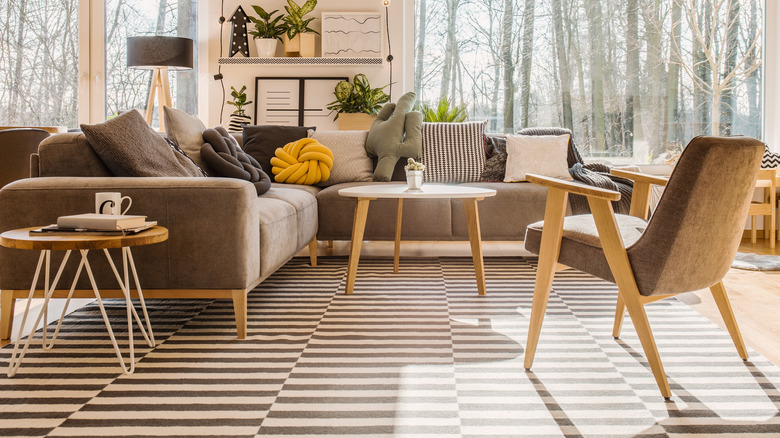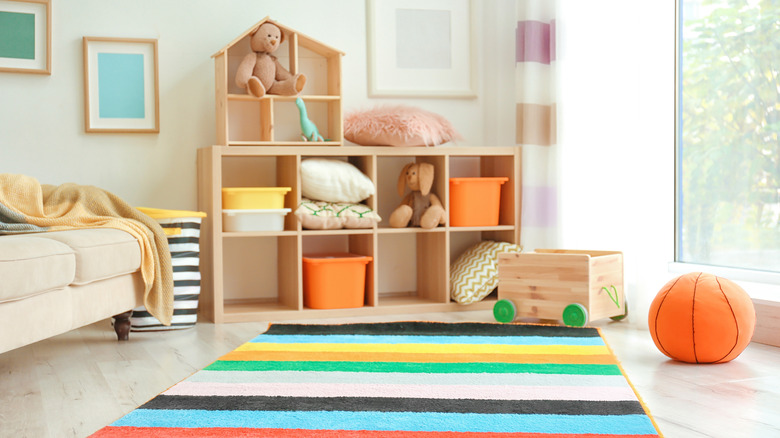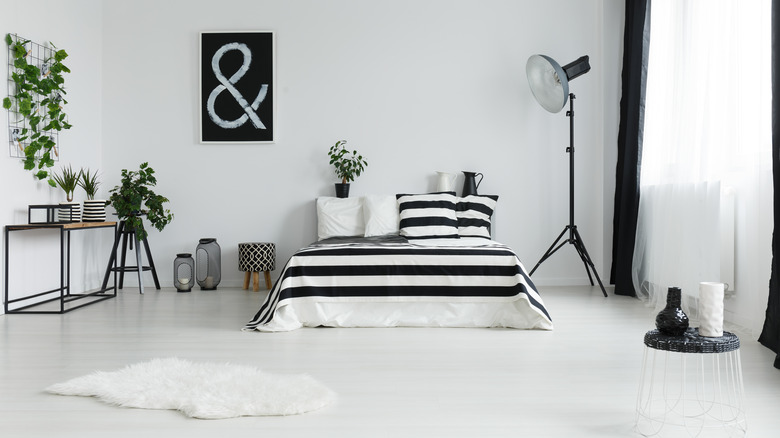Are Stripes Really A Good Idea When It Comes To Decorating Your Home?
Stripes are one of the oldest and simplest patterns used in design, and, because of their long history and lack of complexity, they never truly go out of style. With that being said, however, sometimes stripes can give you a bit more impact than you bargained for in your space. Because of the typically large amount of contrast between the two colors and the pattern's sharp, geometric lines, it's important to toe the line between lively and visually overwhelming in order to create some balance.
If you're not looking for something to serve as a focal point in your room or bring some life back to an otherwise-drab space, it's best to forgo the idea of including stripes altogether in favor of a pattern that's more organic. Organic patterns — those with smoother lines and curves that could reasonably be found in nature — often feel more soothing and natural to the eye than inorganic patterns. If you're willing to take a risk, however, there are ways to incorporate stripes into your spaces that won't leave you with a headache. All it takes is a bit of finesse, and you'll be ready to display this bold pattern anywhere you see fit.
When to avoid using stripes
Recently, trends in interior design have been moving more toward maximalist décor and away from stark minimalism. So, if you've already gone all-in and filled your home with trinkets, covered your walls in artwork, and jam-packed your rooms with unique furniture, it's probably a good idea to stay away from incorporating stripes. This pattern works best as a focal point, so it can very quickly start to overwhelm a space if you have multiple bold pieces fighting for attention.
Additionally, it's necessary to consider that stripes are well-known for highlighting flaws in texture. This isn't much of an issue if you want to bring in a rug or throw pillow in the pattern, but bolder projects, like wallpaper on an accent wall, need to be done with absolute precision. If you have even the slightest inkling that your walls might be a bit uneven or bumpy, especially if you're living in a historic home, it's best to bypass stripes in favor of something more forgiving.
How to use stripes in décor
When you decide to use stripes in your décor, it's important to take the room's purpose into consideration. Again, stripes are a very lively, bold pattern, so they work well in spaces that could use a bit of an energy boost, like playrooms, entryways, and outdoor patio areas. This impact can be increased or decreased based on the amount of contrast between the two striped colors. For a more laid-back effect, try stripes that incorporate two colors that are similar to each other, like light blue and white.
Also, if decorating with stripes, take into account the other patterns present. Just because it's simple, it doesn't mean that you have to mix and match. Instead, try playing up the textural elements while keeping everything else fairly neutral. Style a leather couch with a fluffy throw and a striped rug, for example, or bring in some natural hemp rugs and bleached wood pieces as a beachy pairing for your summery striped patio furniture.


